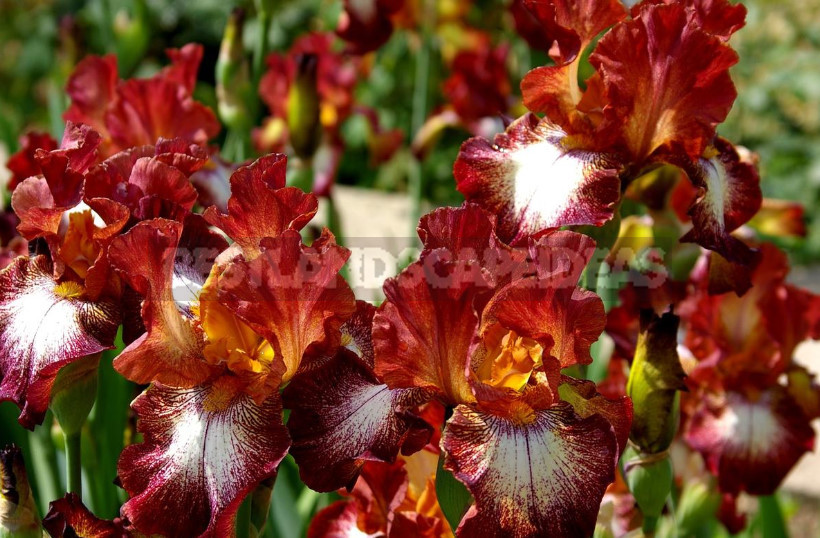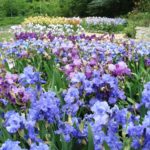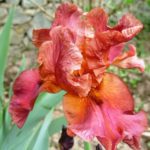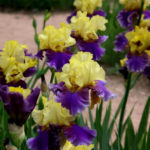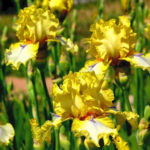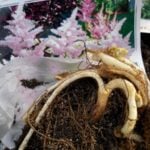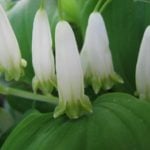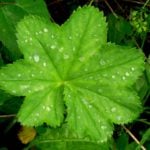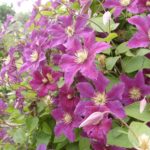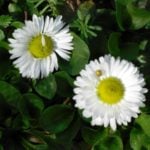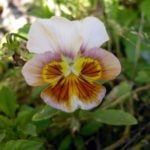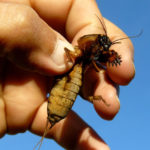As everything is fleeting springtime wasn’t able to wither the tulips, it flared and went out of the dwarf irises. They were replaced by tall bearded handsome irises, one of the main advantages of which is the abundance of varieties of various colors.
Additional decor of the outer lower lobes of the perianth (or fouls) – beard – a strip of fluffy, often brightly colored hairs, a kind of road for pollinating insects (more bumblebees) inside the flower. It can be plain (white, yellow, tangerine, blue) or multi-colored.
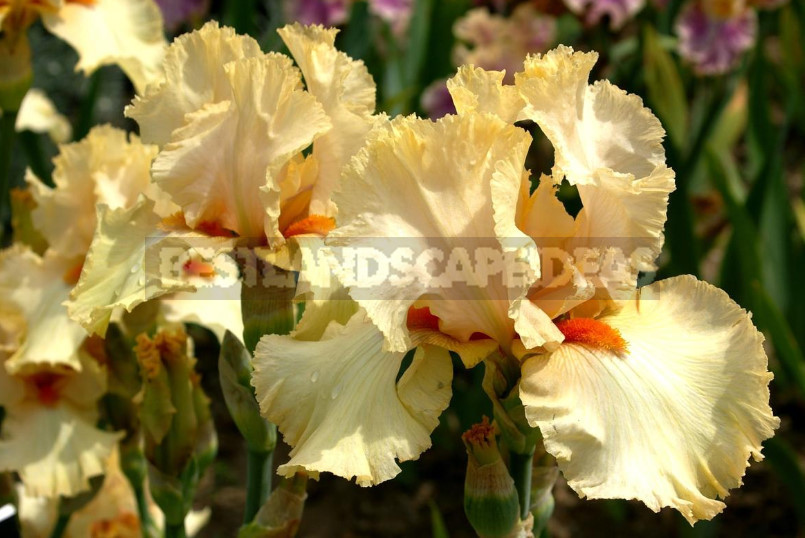
Standards (upper inner perianth lobes) form the upper tier and are always directed upwards.
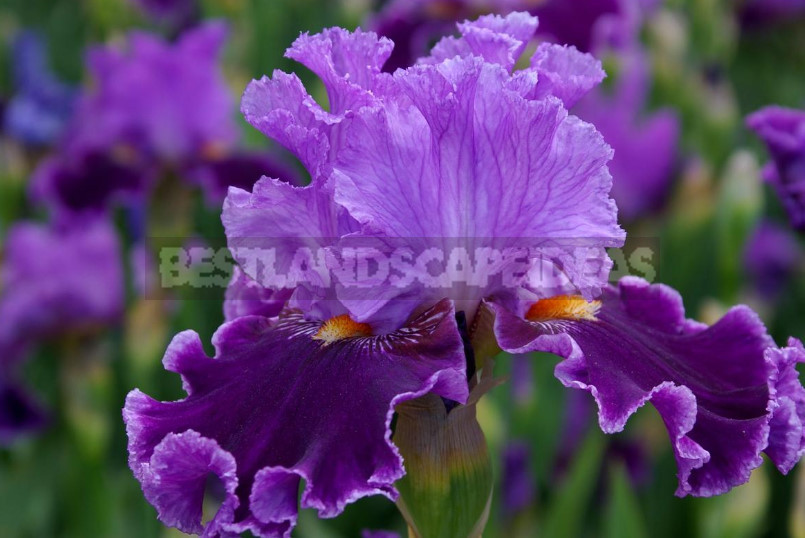
The edge of the petals is smooth, wavy, corrugated and bubbly. In the latter case, irises are called lace.
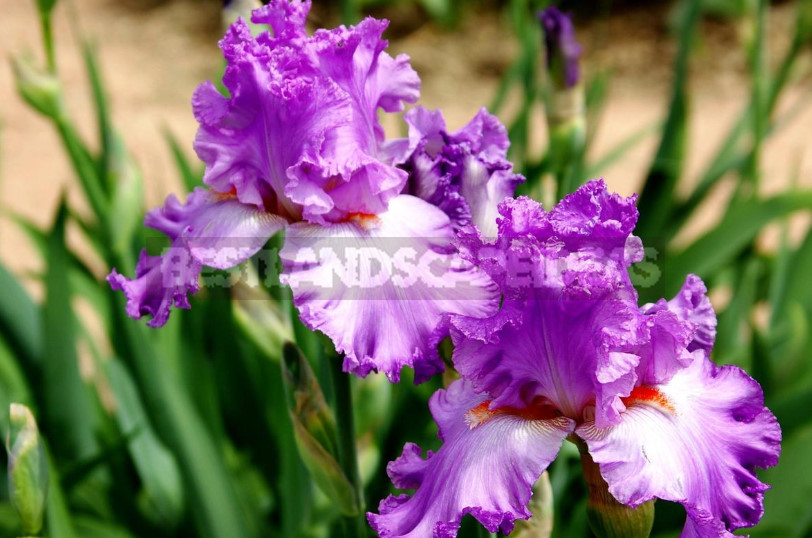
Today I invite you to the iris area, where from the beginning of may comes their rainbow bloom. Many visitors during this period tend to visit the Garden to enjoy the exquisite aromas of irises. After all, the smell of each variety is different from the others, and sometimes it is impossible to give preference to one, so they are all good!
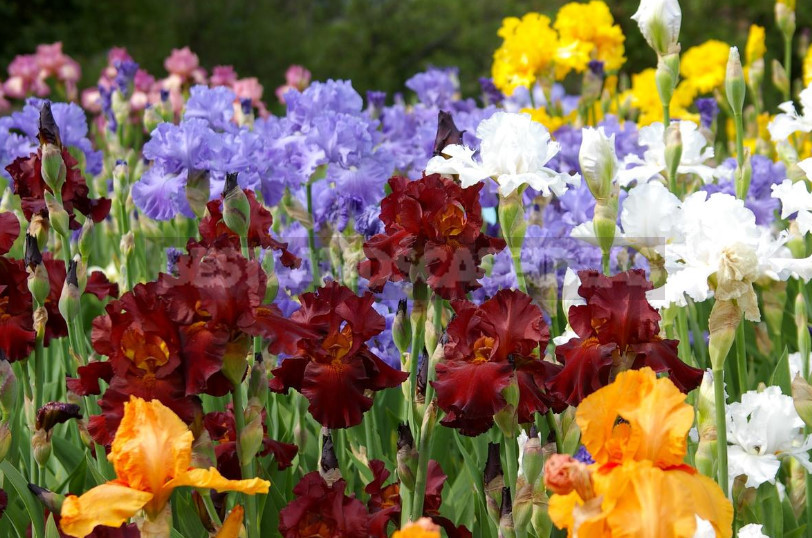
Currently, the world assortment of bearded irises has 35 thousand varieties. The collection of irises of the Garden consists of more than 350 varieties. Most of them are presented in the exposition of the Park, which was founded in 2005.
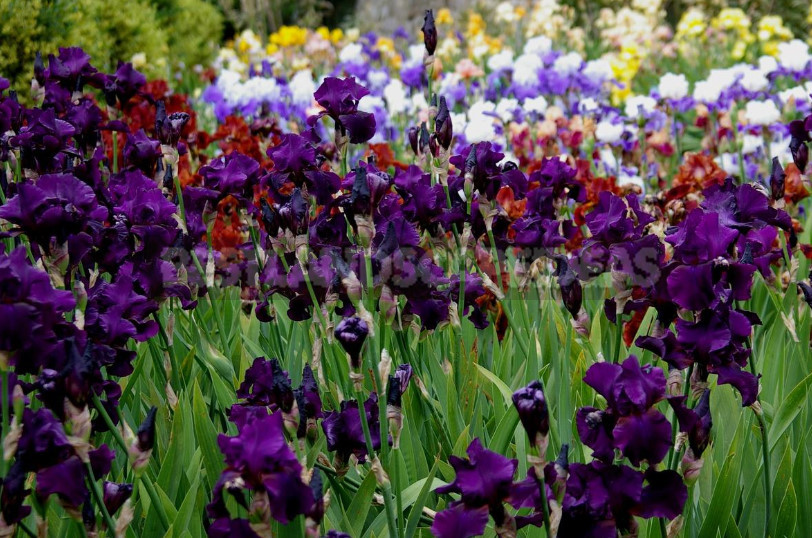
It is known that the color irises are divided into 4 main groups.
Groups of bearded irises (by color)
- Monochrome (self) – the upper and lower lobes of the perianth are painted the same way: white, blue, blue, purple, lilac, pink, yellow, brown, red, almost black.
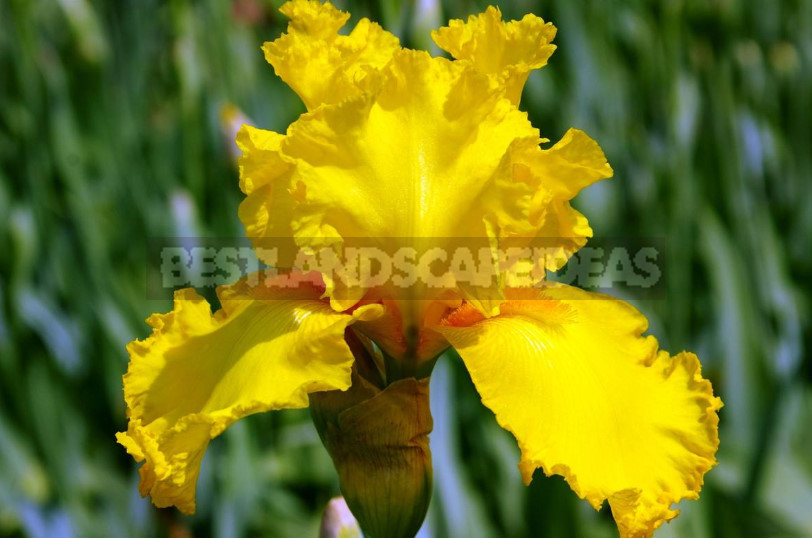
- Two-tone (bittone) – the upper and lower lobes of the perianth are painted in different shades of the same color.
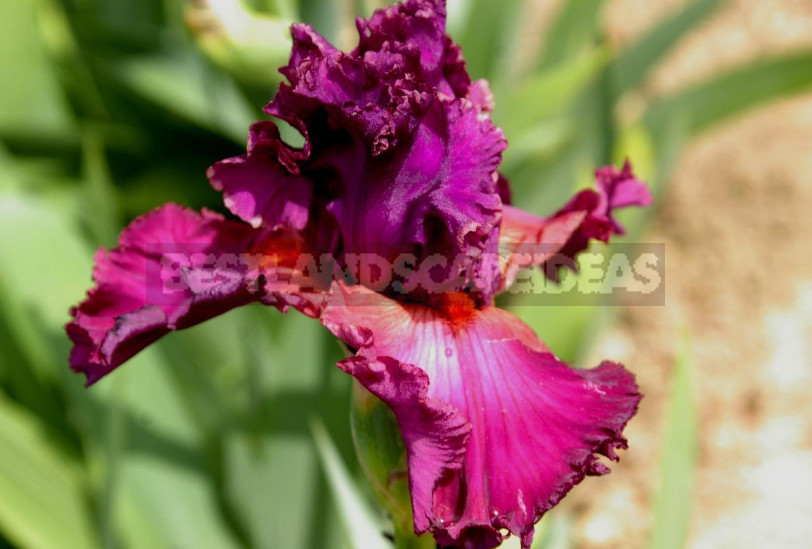
- If the grade of the upper lobe purple color, and the lower purple, or standards light blue, falls darker, such varieties are called neglect.
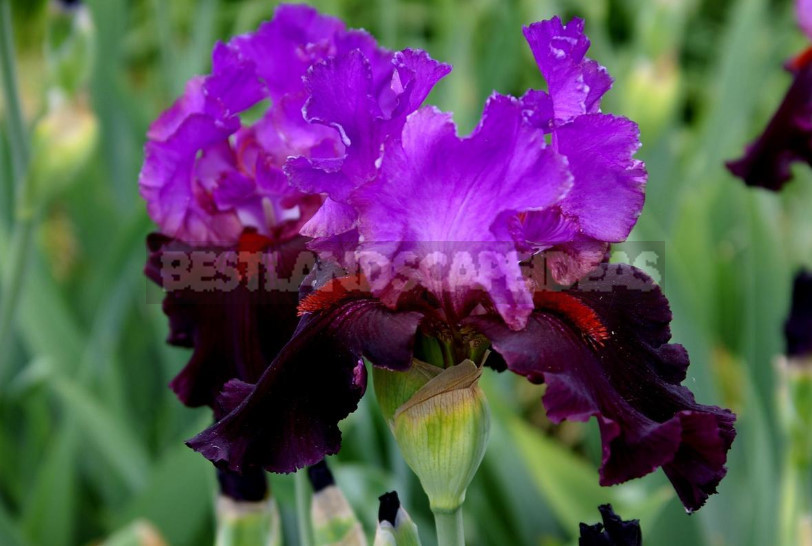
- Two-color (bicolor) – the upper and lower lobes of different colors.
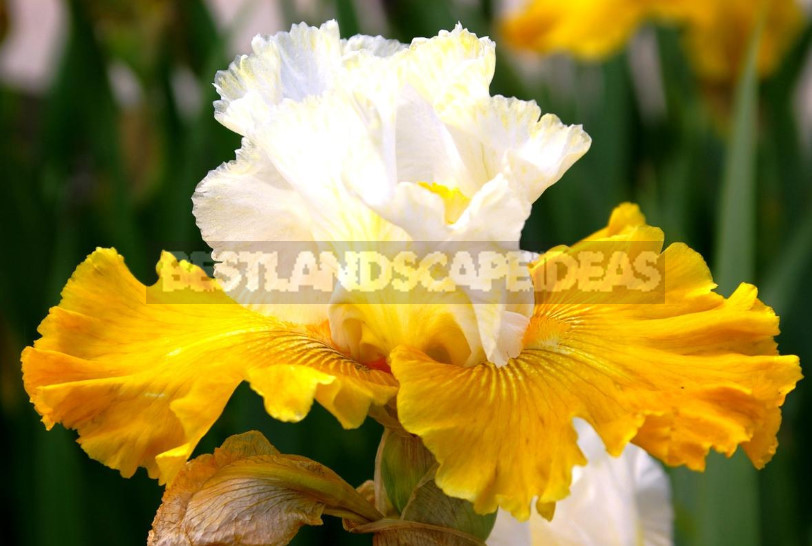
But today we are waiting for no less pleasant pastime: we go to the carnival of irises to appreciate the beauty of exquisite monochrome varieties.
White irises
They are not yet frequent visitors to our flower beds, but their popularity is growing like a snowball, so to conquer the hearts of summer residents do not need much time.
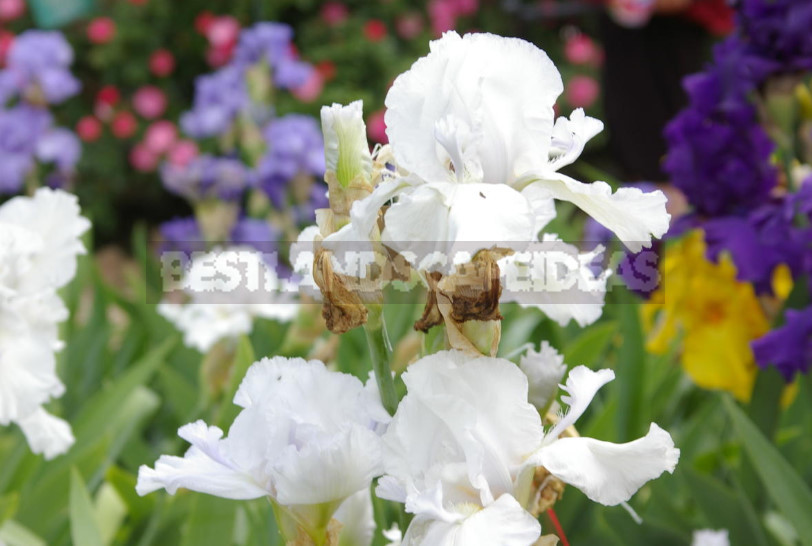
Bright red or tangerine beard on the lower white lobes of the perianth, like the variety ‘Nordica’ – a spectacular contrast and a kind of “brooch” flower.
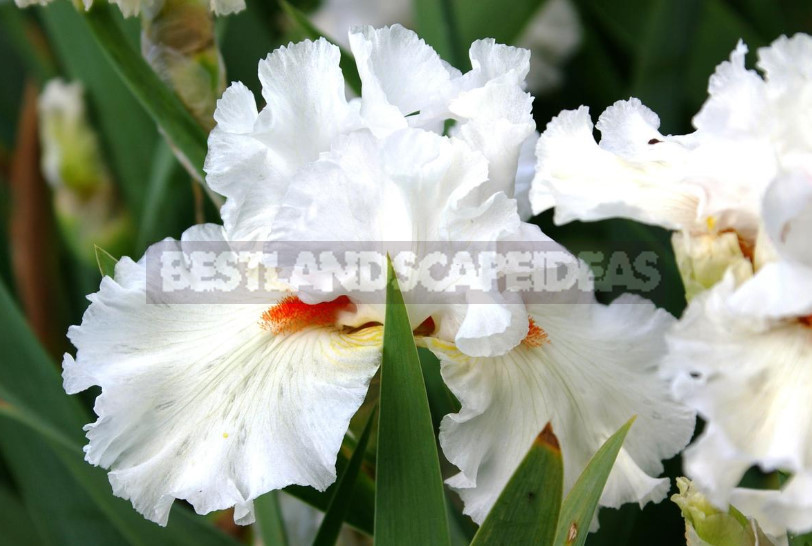
The variety ‘Frosting’ beard does not stand out (in tone); a kind of charm of this white iris is enclosed in the wavy petals.
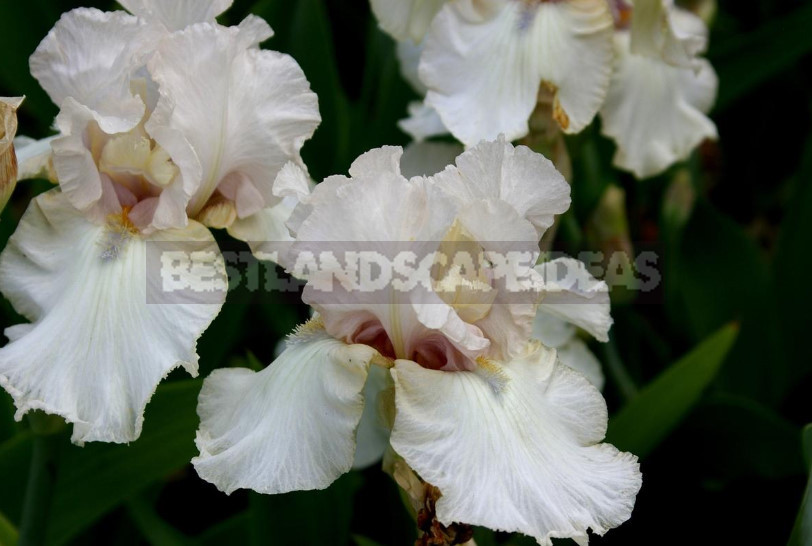
White irises are in good harmony with all other plants in may, softening the sharpest tones and muted intense. They are able to refresh the darkest plant compositions, becoming their accents.
Blue irises
They are no less interesting than white.
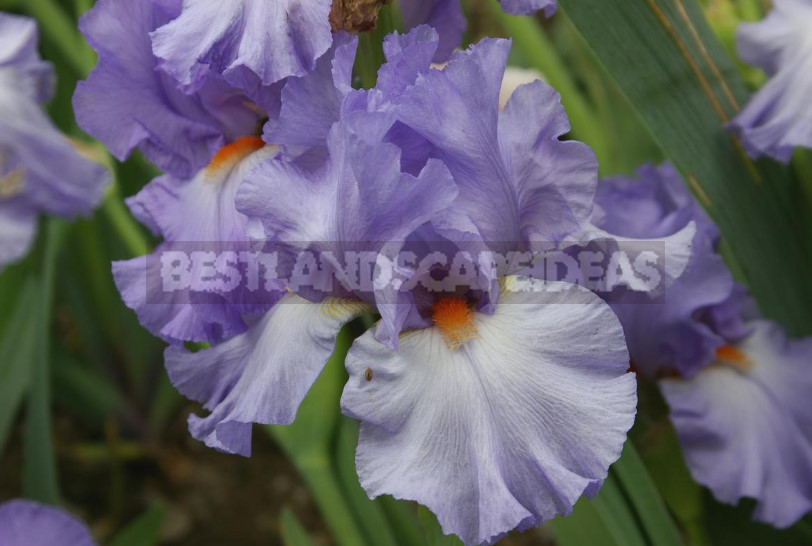
Despite the massive xiphoid leaves, they create a feeling of lightness and transparency.

Blue irises will look great in combination with varieties of warm colors.
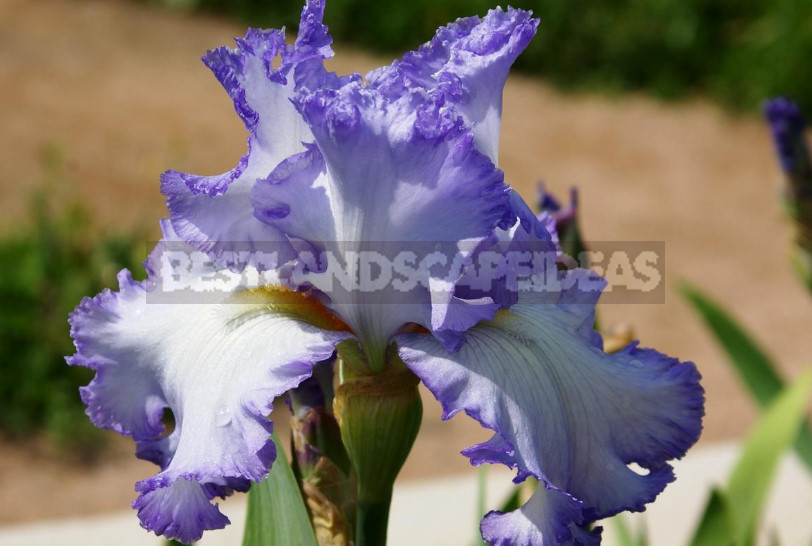
Even lighter irises, as a sort of ‘Divine Duchess’, will require a contrasting combination.
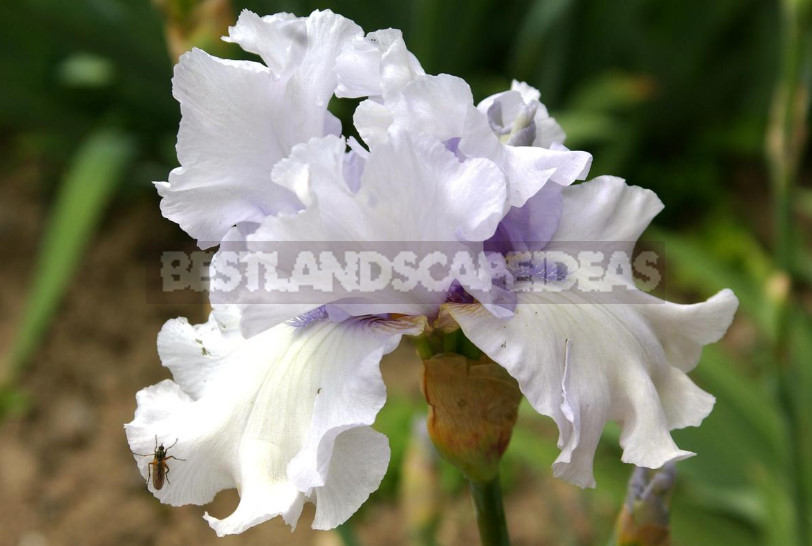
Harmony in contrast will provide them with blue, purple and almost black varieties.
Blue irises
Perhaps they are the coldest.
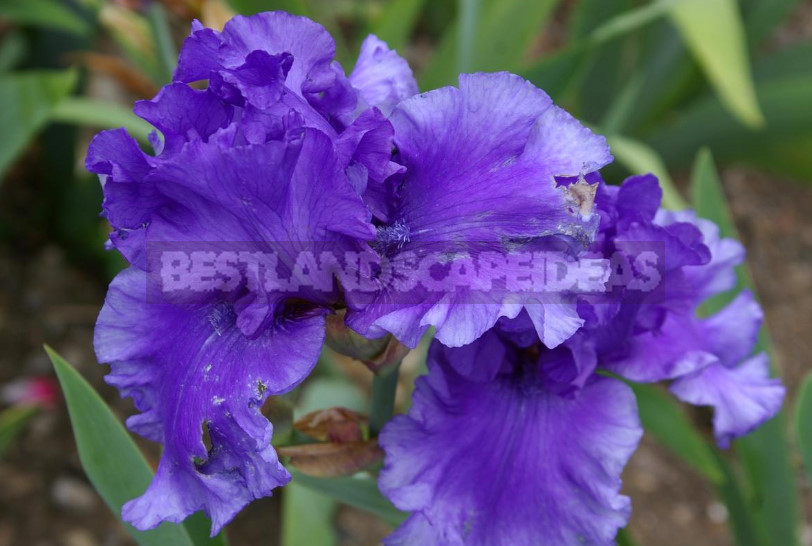
Blue irises are endowed with the ability to create optical illusions: they can visually push the boundaries of the flower bed.
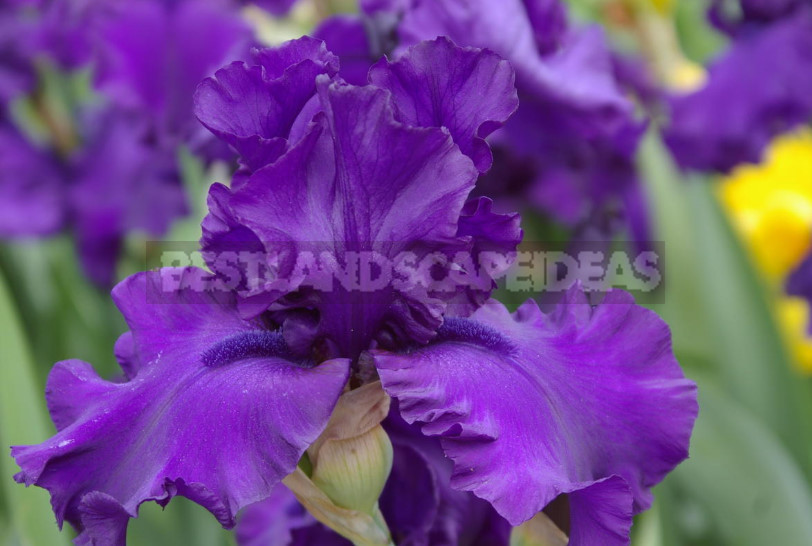
They are perfectly combined with yellow, white, apricot, orange varieties.
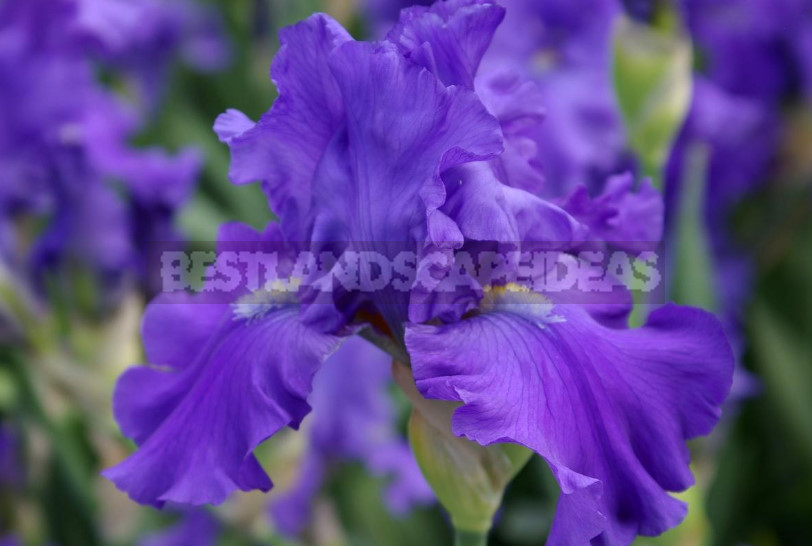
Such contrast is rather interesting not in itself, but as reception of expressiveness of blue color.
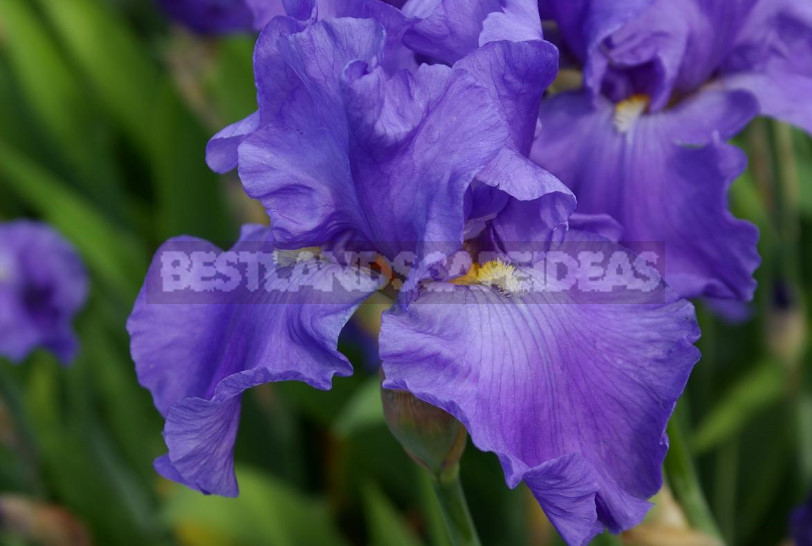
This combination of irises can be used not only in your country iridarii, but also with other plants.
Purple irises
If they are compared with blue varieties, they are, thanks to the red, which is part of the purple, less cold.
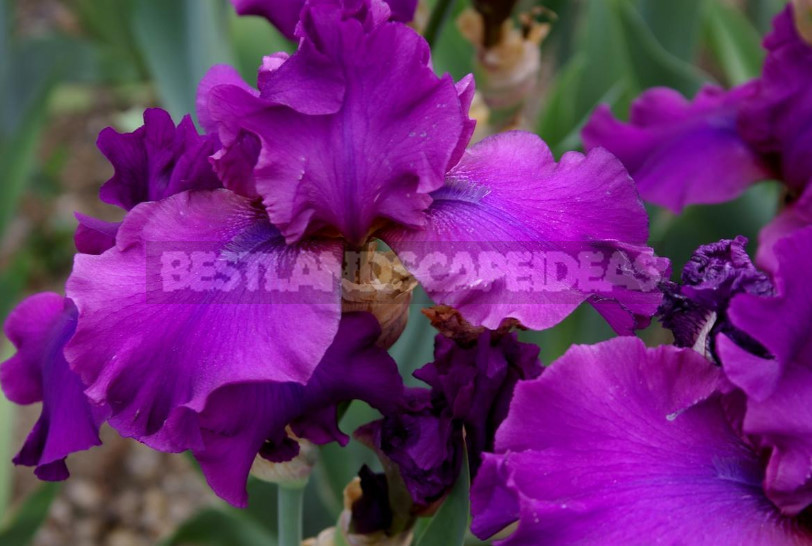
Planting purple irises visually distant, which deepens the spatial perspective in the background.
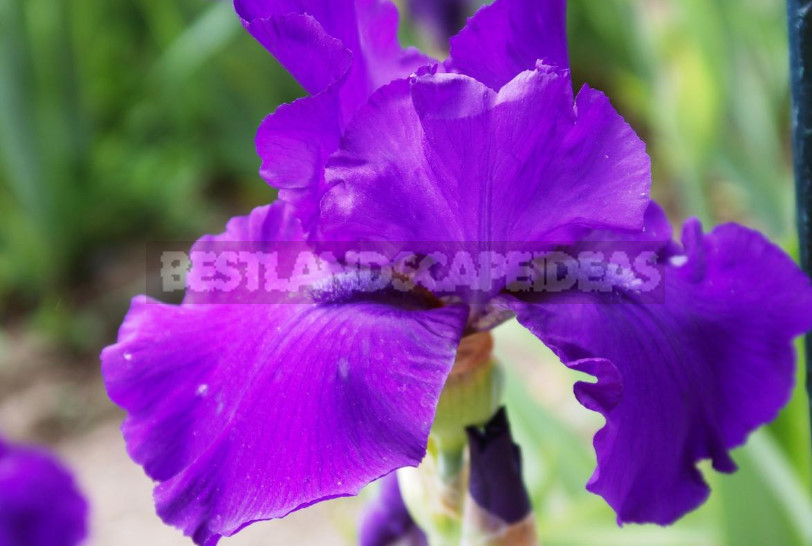
Purple irises are perfectly combined with a variety of varieties of light shades of warm tones.
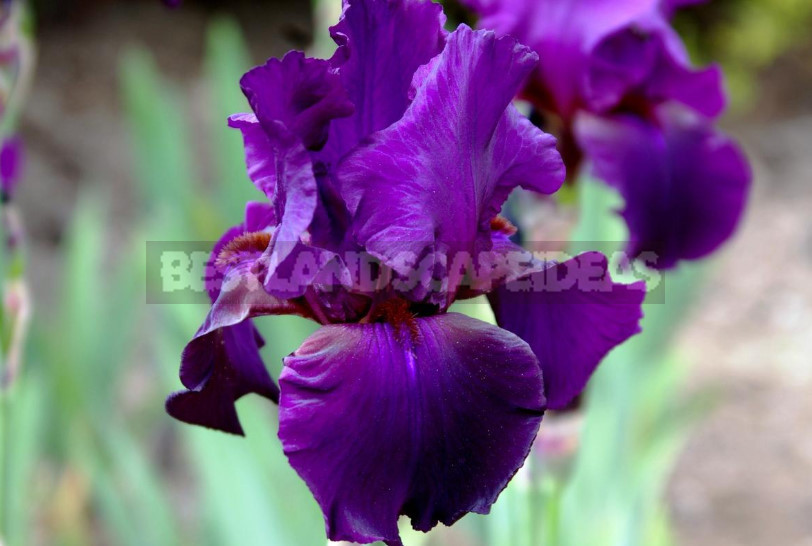
But to arrange for the cottages surround planting purple iris exclusively is not worth it.
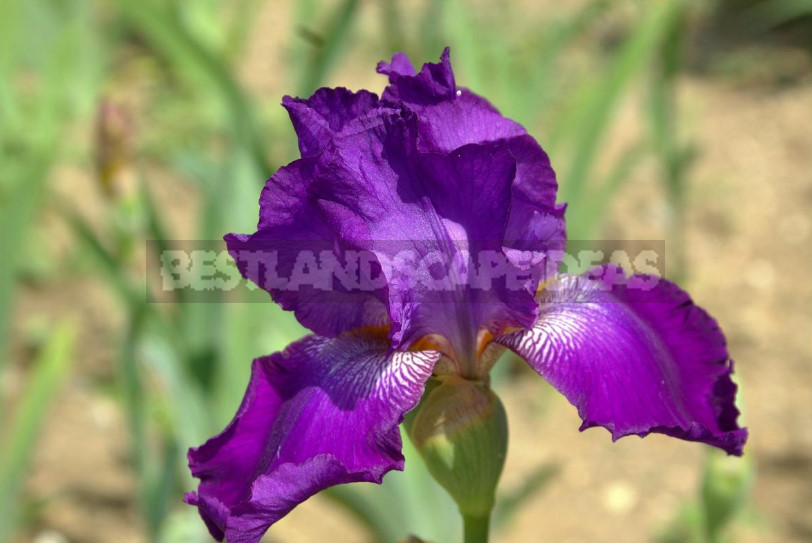
The fact is that they suppress their heaviness.
Lilac, lilac-pink irises
These varieties, unlike purple, are lighter and more transparent.
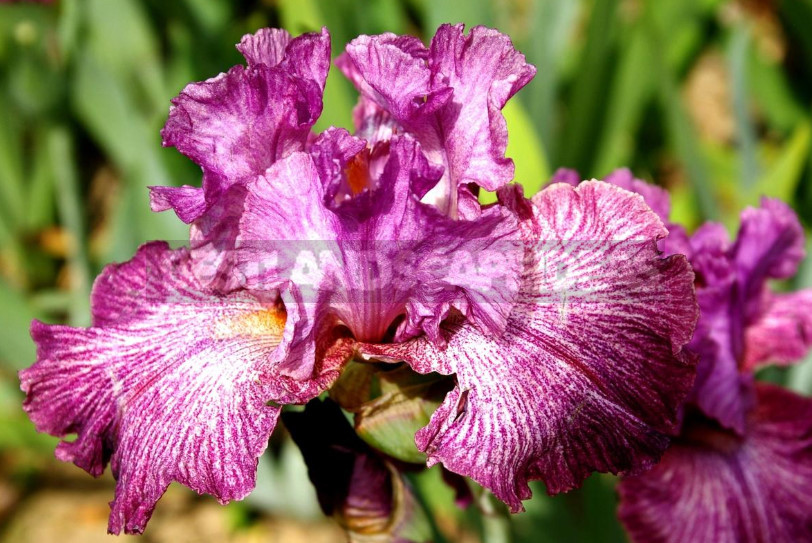
As a rule, such irises in mixborders need the support of warm colors.
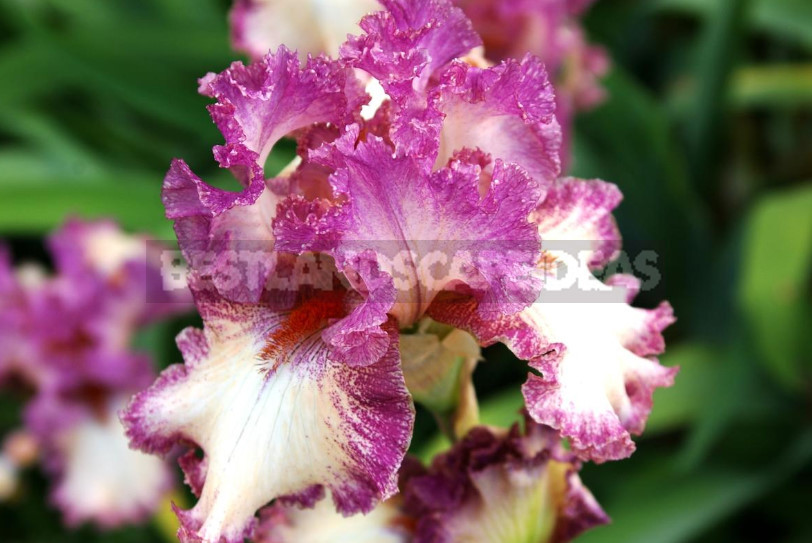
In romantic gardens they look beautiful with white irises.
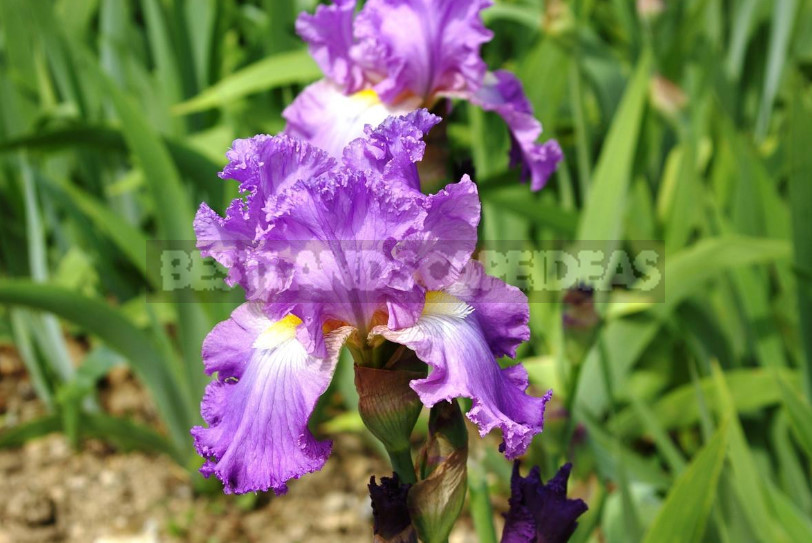
A win-win option is to support them with purple monochromatic and two-color varieties.
Red, red-brown irises
Incredibly beautiful varieties! They do not leave anyone indifferent.
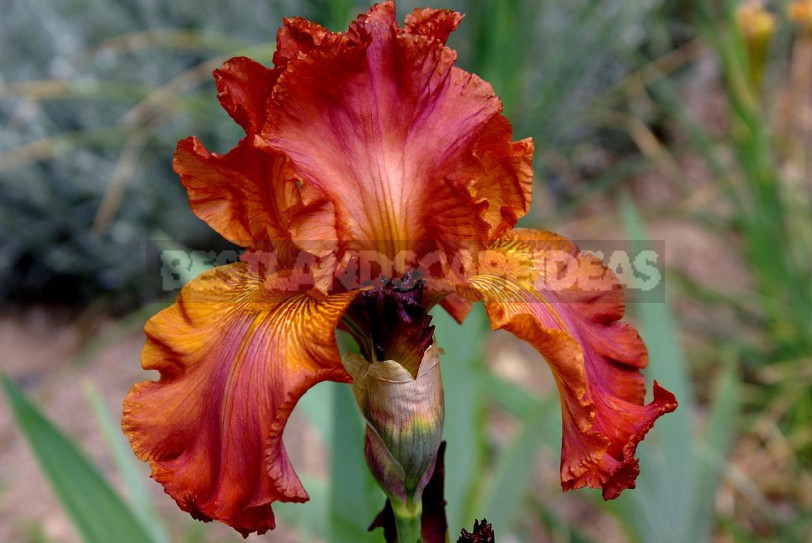
About many red irises, I told earlier.
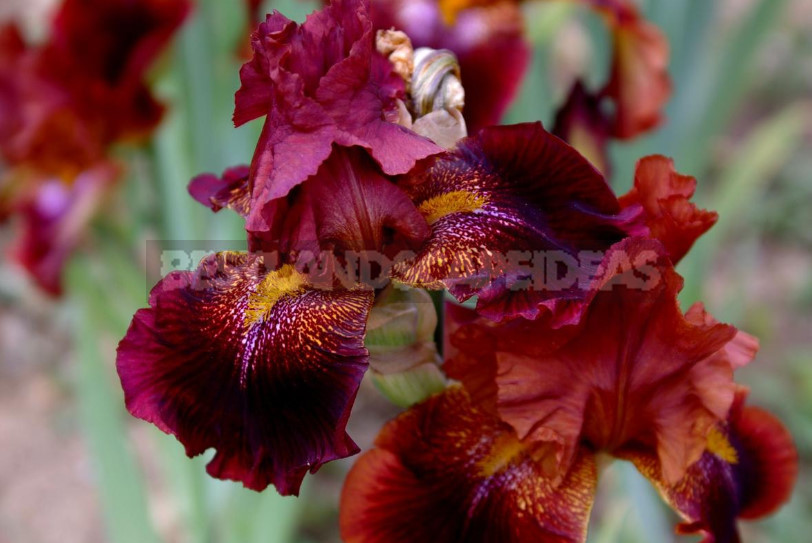
So this year, many visitors especially admire them.
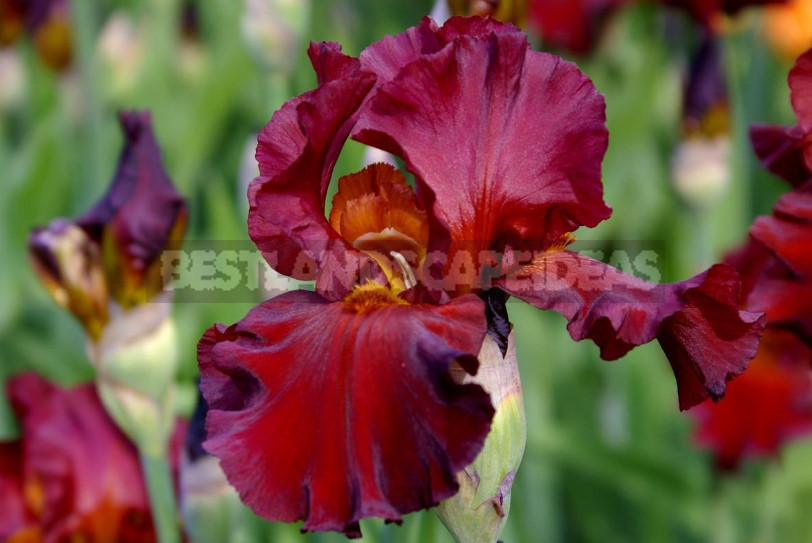
Unlike red roses, they are more unusual.
Pink irises
Very delicate varieties, as if specially created for romantic spring flower beds.
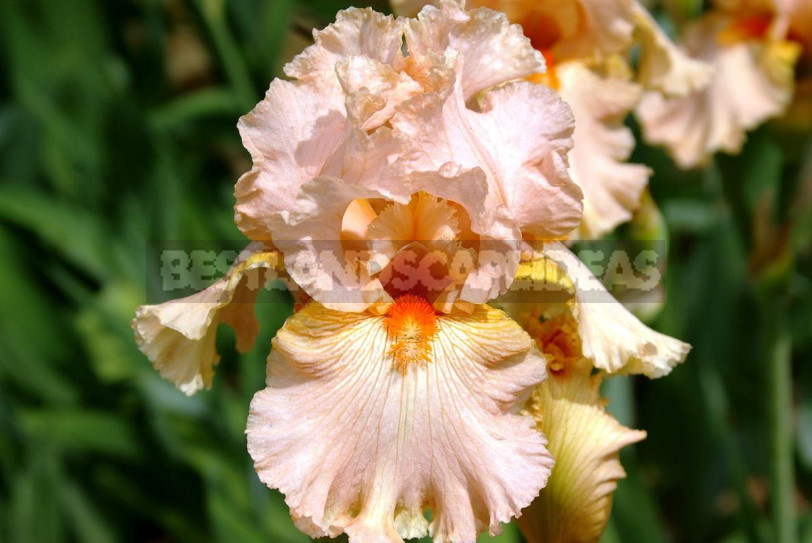
Undoubtedly, the aperture of pink irises weaker than red.
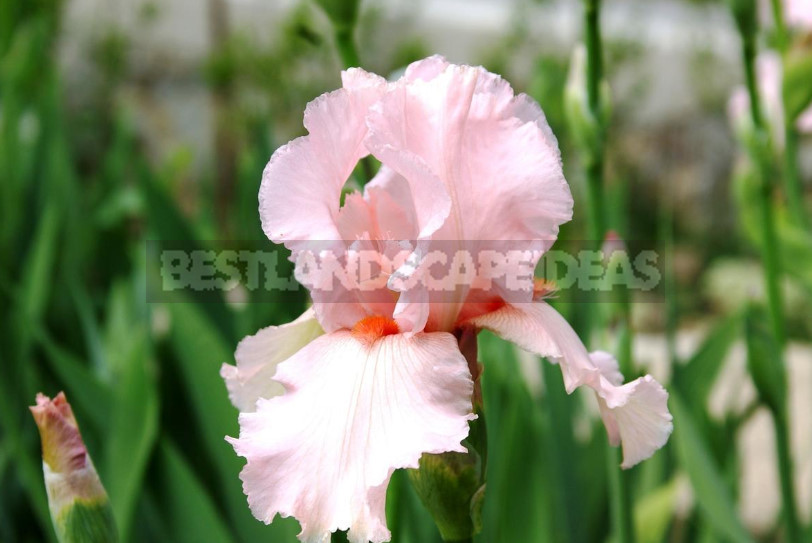
Therefore, pink irises are perceived more gently.
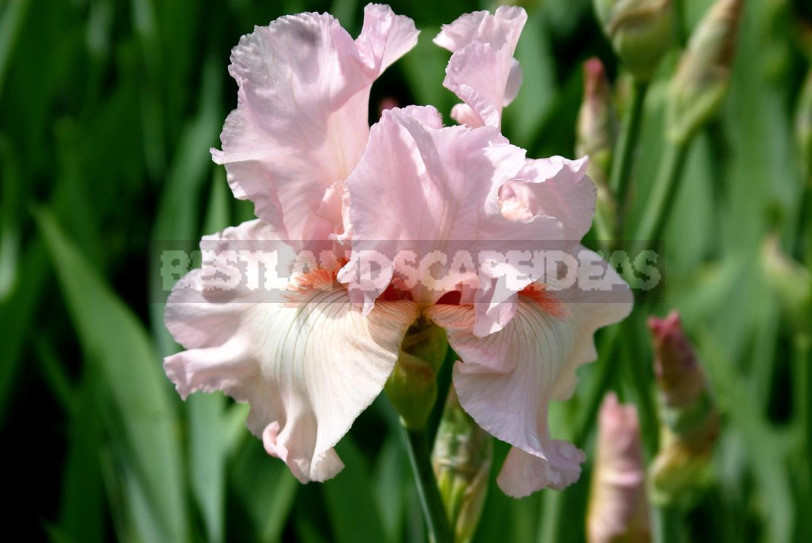
Landscape designers consider pink irises in spatial arrangement more neutral than red ones.
Yellow irises
Sunny irises quietly but firmly embracing our cottages.
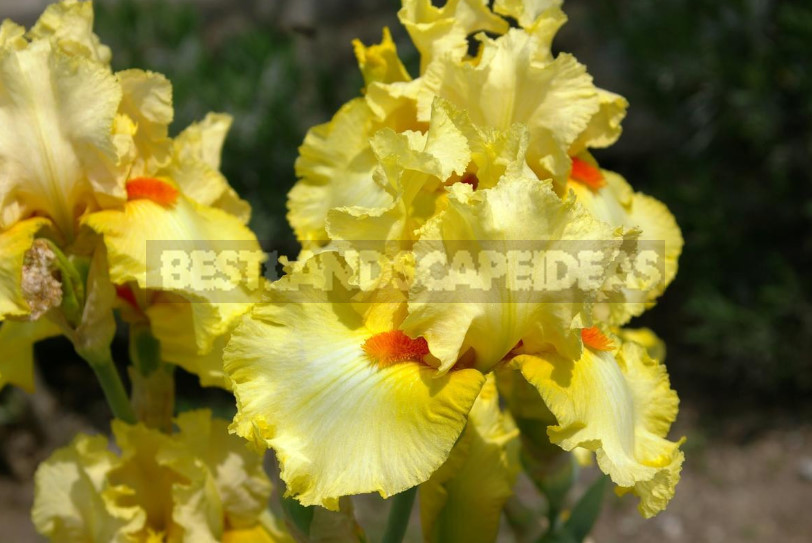
They have many shades from pale, light lemon to bright yellow.
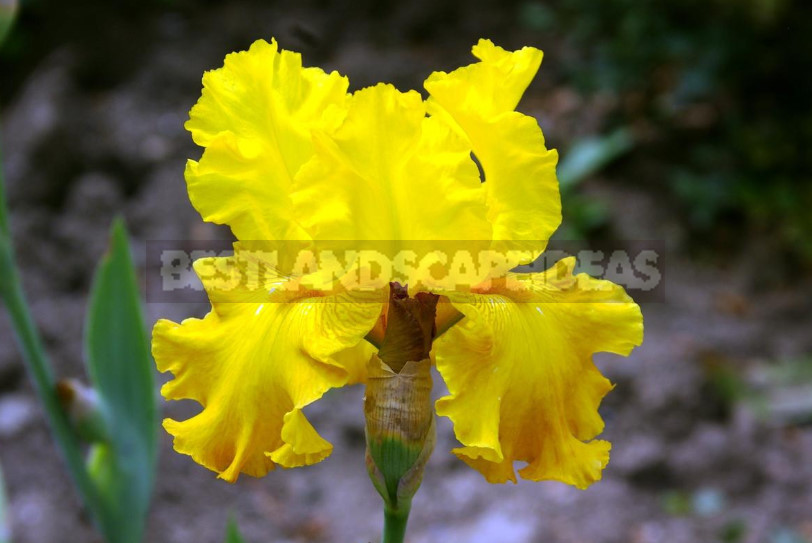
They look beautiful in flower beds with purple, blue, brown and white varieties.
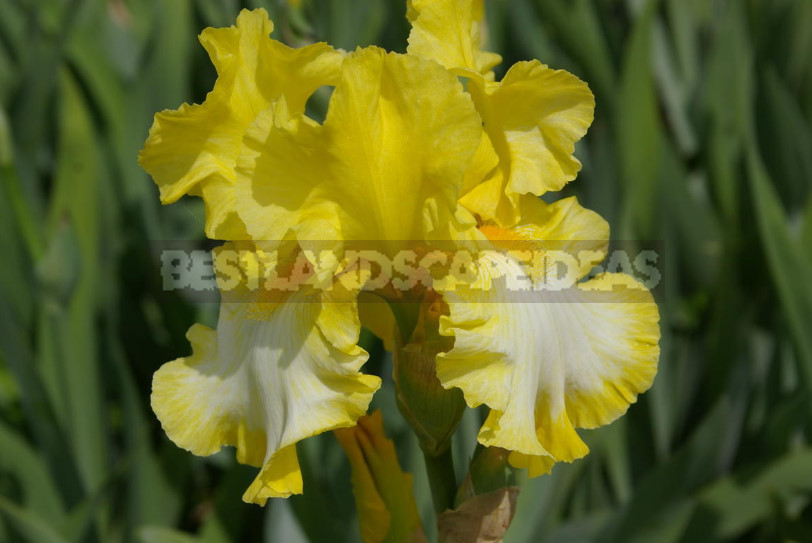
They are universal and many-sided.
Orange and brown irises
Very bright. They are able to bring the perspective closer and enhance its volume.
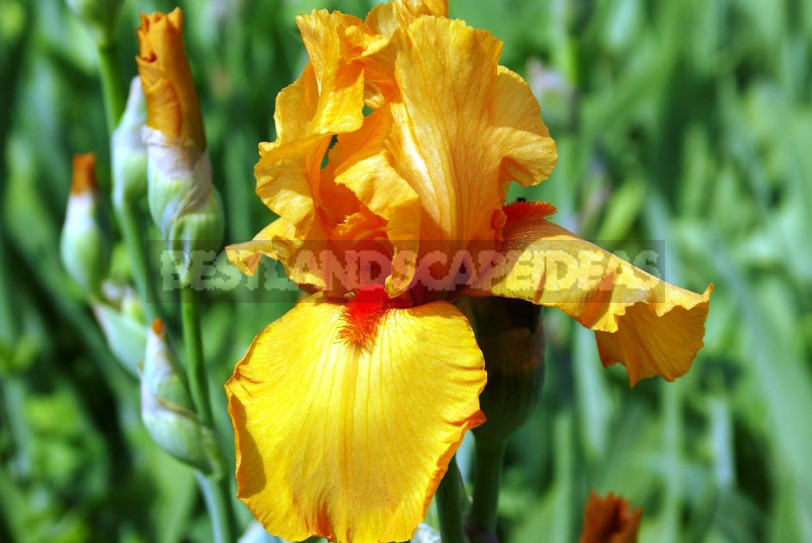
Orange irises in the composition are dominants.
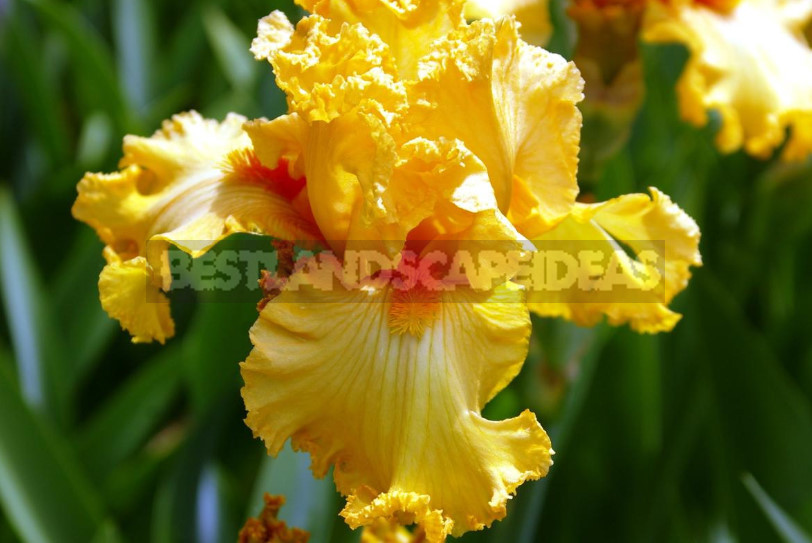
Both orange and brown irises often come to the fore, actively affect other colors (especially cold), highlighting and emphasizing them.
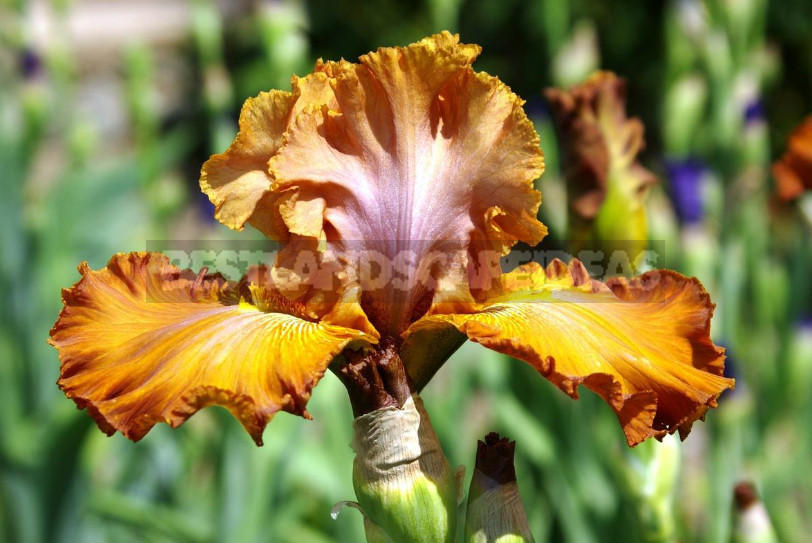
Orange and blue irises give the most spectacular contrasts.
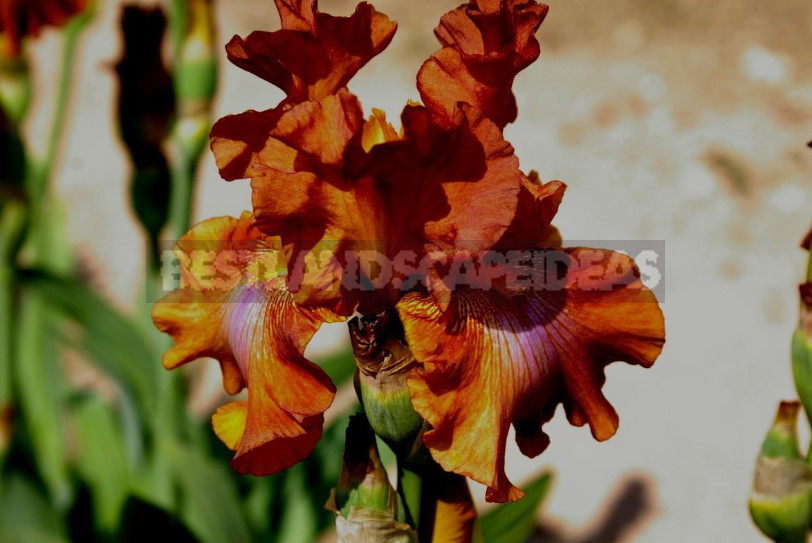
They are perfectly visible from afar, as they create bright colors.
Black irises
There is nothing more mysterious than these flowers in the vegetable world.
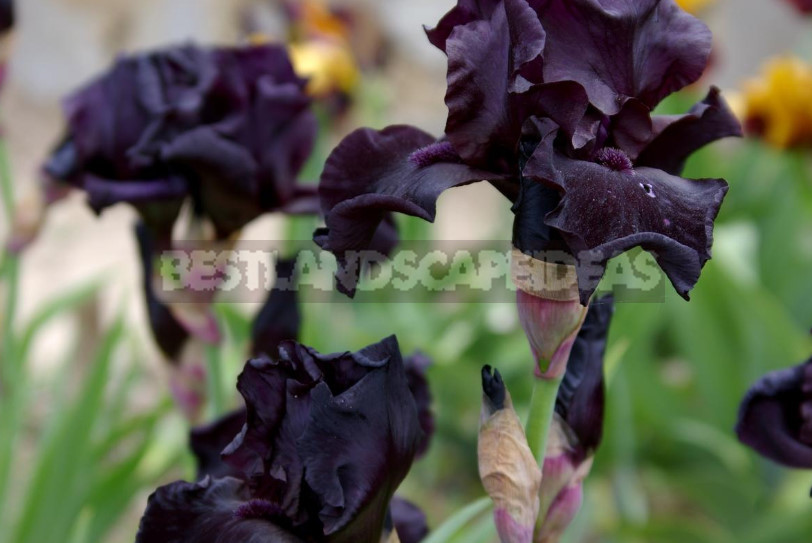
They contrast perfectly with white, cream, light blue, blue varieties.
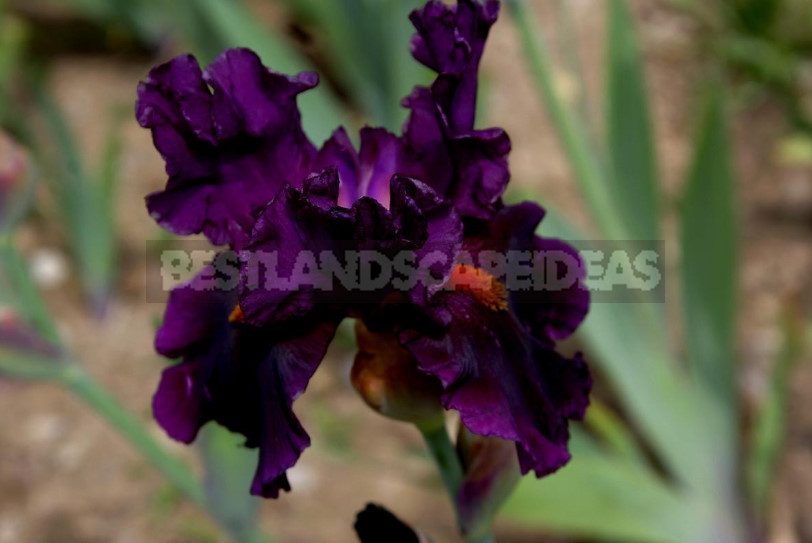
With such irises your spring flower garden will certainly be refined and moderately luxurious. A significant background role in all varieties is played by the green color of the leaves, which are no less demanding than the flowers: they must be healthy, without signs of damage and lesions.
